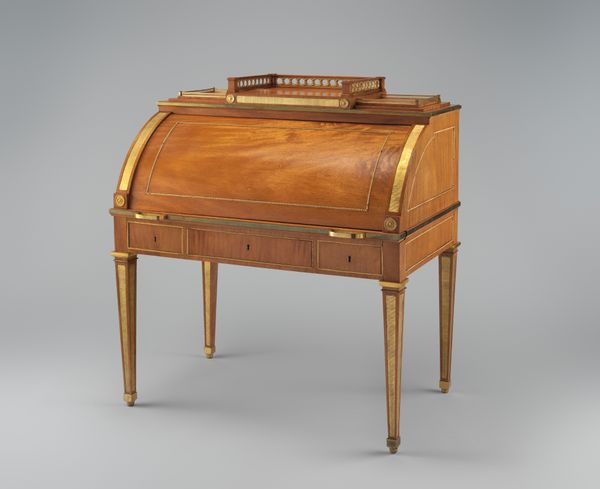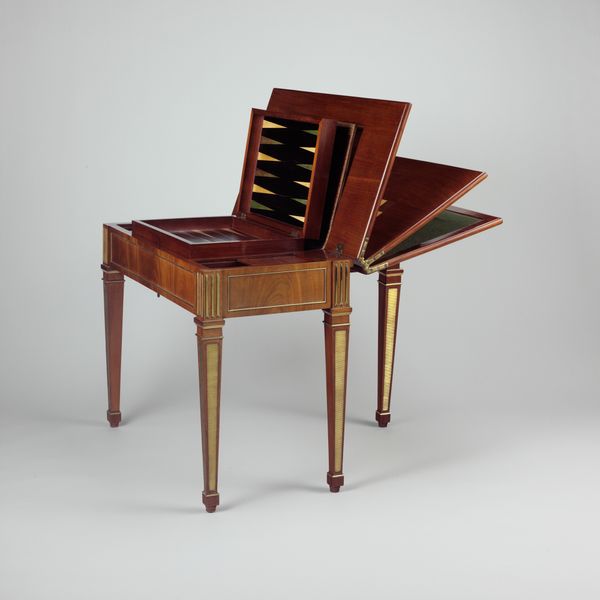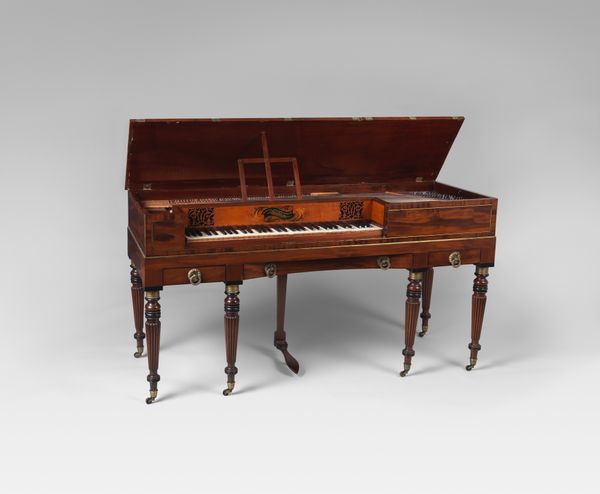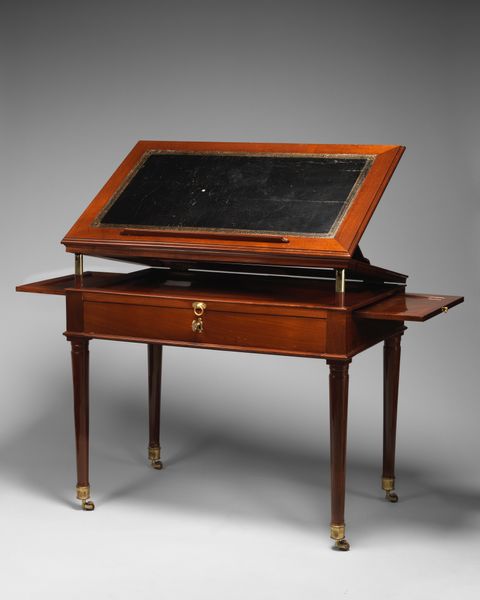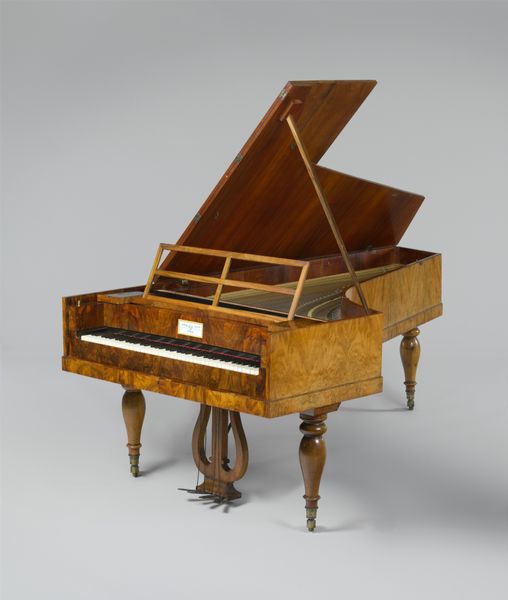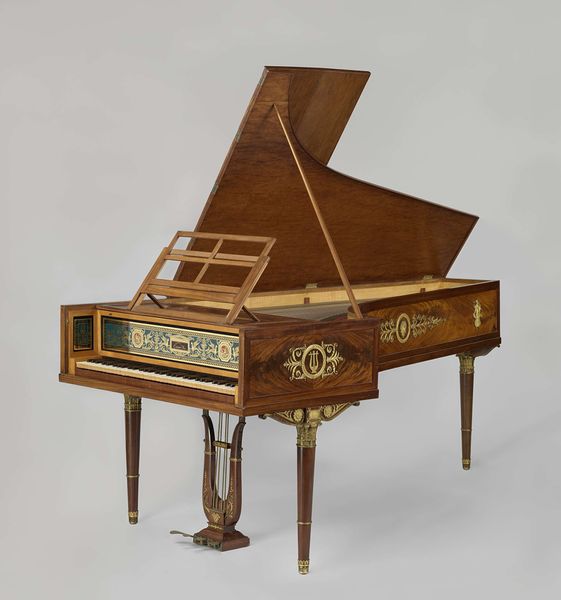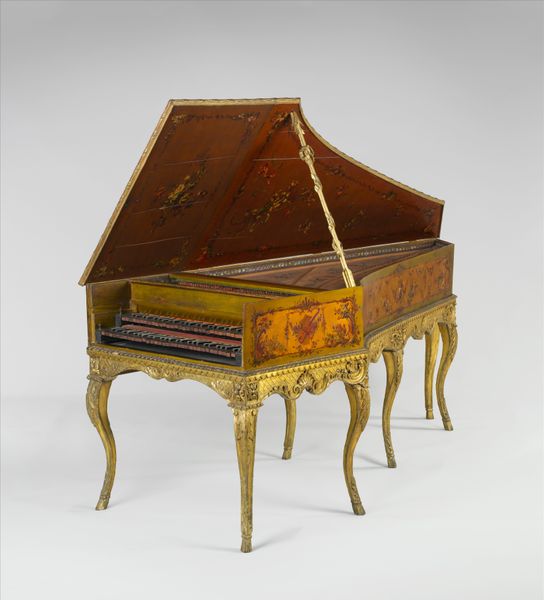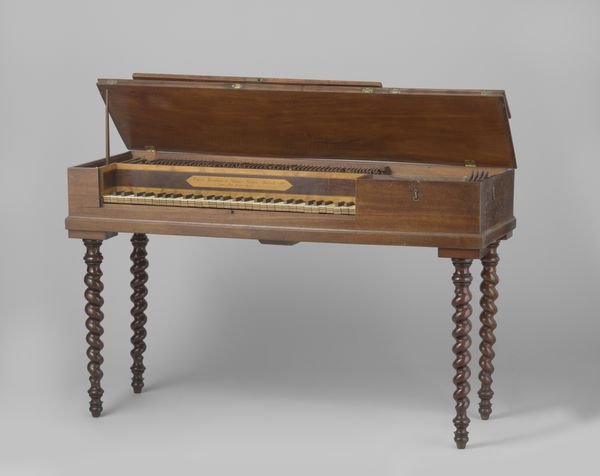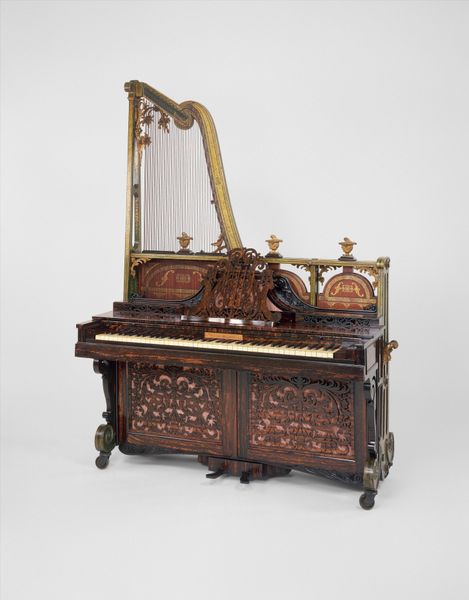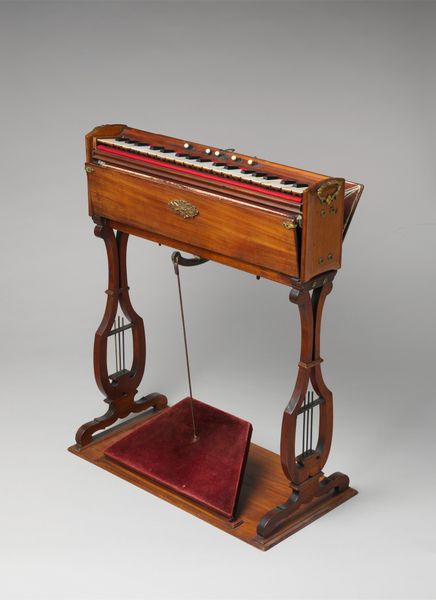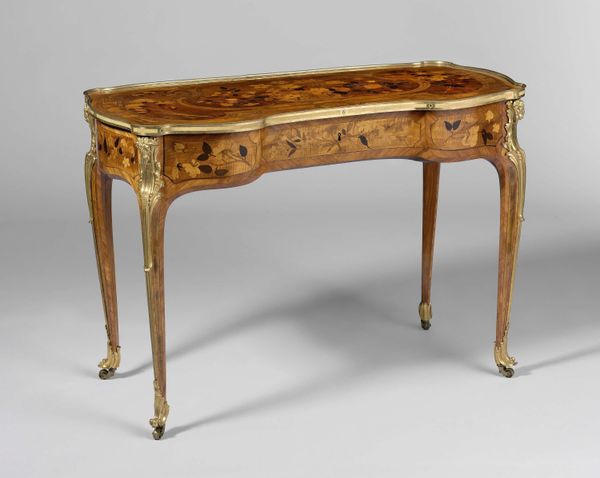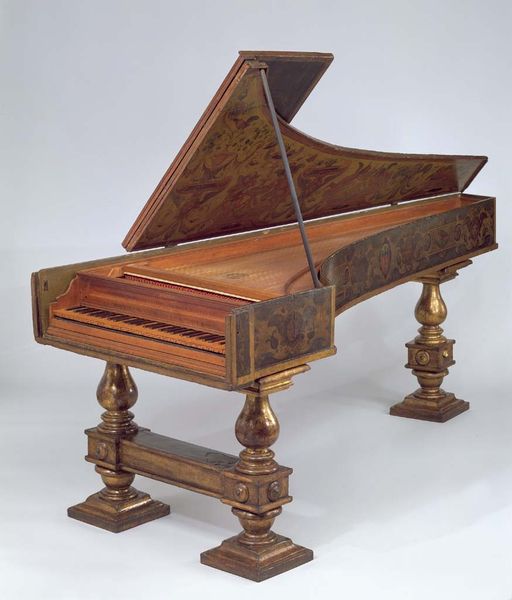
Dimensions: Overall (Table): H. 29 × W. 27 3/4 × D. 16 3/8 in. (73.7 × 70.5 × 41.6 cm); Overall (Bed table): H. 9 1/4 × W. 26 7/8 × D. 15 1/2 in. (23.5 × 68.3 × 39.4 cm)
Copyright: Public Domain
Martin Carlin crafted this combination table around 1775 of sycamore, fruitwood, and oak. Notice the meticulous diamond parquetry across the surfaces. This geometric pattern isn't merely decorative; it echoes motifs found in ancient Roman mosaics, symbolizing order and the cosmos. Consider how this pattern has evolved across cultures, resurfacing in Islamic art, where similar geometric designs reflect divine unity. Observe how these repeating patterns create a sense of rhythm, not unlike the cyclical nature of time itself. This symbol speaks to the human desire to impose structure on chaos, and the emotional reassurance derived from such order. It is a deeply rooted psychological need. Even today, geometric patterns in art and design trigger primal responses, connecting us to millennia of human expression. The diamond motif, therefore, is more than surface deep—it's a thread weaving through history.
Comments
No comments
Be the first to comment and join the conversation on the ultimate creative platform.
